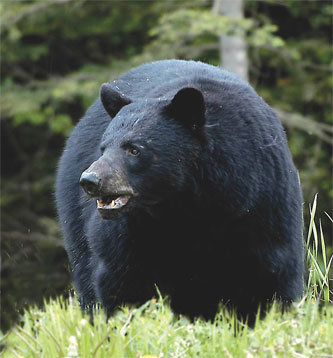
On January 8, the Utah Wildlife Board increased the number of permits to hunt bears in Utah this spring and fall. Board members raised the total number of permits from 248 last year to 299 for 2008.
Based on past success rates, about 15 more bears should be taken by hunters in Utah this year.
Bear management plan
Bear management in Utah is guided by the state’s Black Bear Management Plan. The three major goals of the plan—keep the percentage of female bears taken by hunters below 40 percent; keep the average age of bears taken by hunters above 5 years old; and keep the adult survival rate above 78 percent—were all met in 2007.
“We’re always happy when these goals were met. And the goals have been met every year since the plan was implemented in 2000,” says Kevin Bunnell, mammals program coordinator for the Division of Wildlife Resources.
“When the goals are met, we know Utah’s black bears are doing well,” Bunnell says. “And because the goals were met, we know that Utah’s bear populations can support some increased harvest without having a negative effect on the overall population.”
Bunnell says most of the additional bears will be taken in areas in northern, central and northeastern Utah where people encountered bears the most in 2007. “Taking a few more bears should help reduce the chance that people and bears run into conflict in these areas this year,” he says.
Keep your campsite and cabin area clean
Even though a few more bear permits will be available in 2008, Bunnell says taking more bears is not a long-term solution to reducing conflicts between bears and people.
The solution, he says, is people doing the right things in the outdoors. He stresses that the key to preventing problems with bears is to not attract them to you in the first place.
“Not attracting bears is the key to preventing problems for you and for the bears,” Bunnell says. “And it’s simple to avoid attracting bears to your campsite or cabin area—don’t scatter food and garbage around these areas, and keep your food in places where bears can’t get to it.”